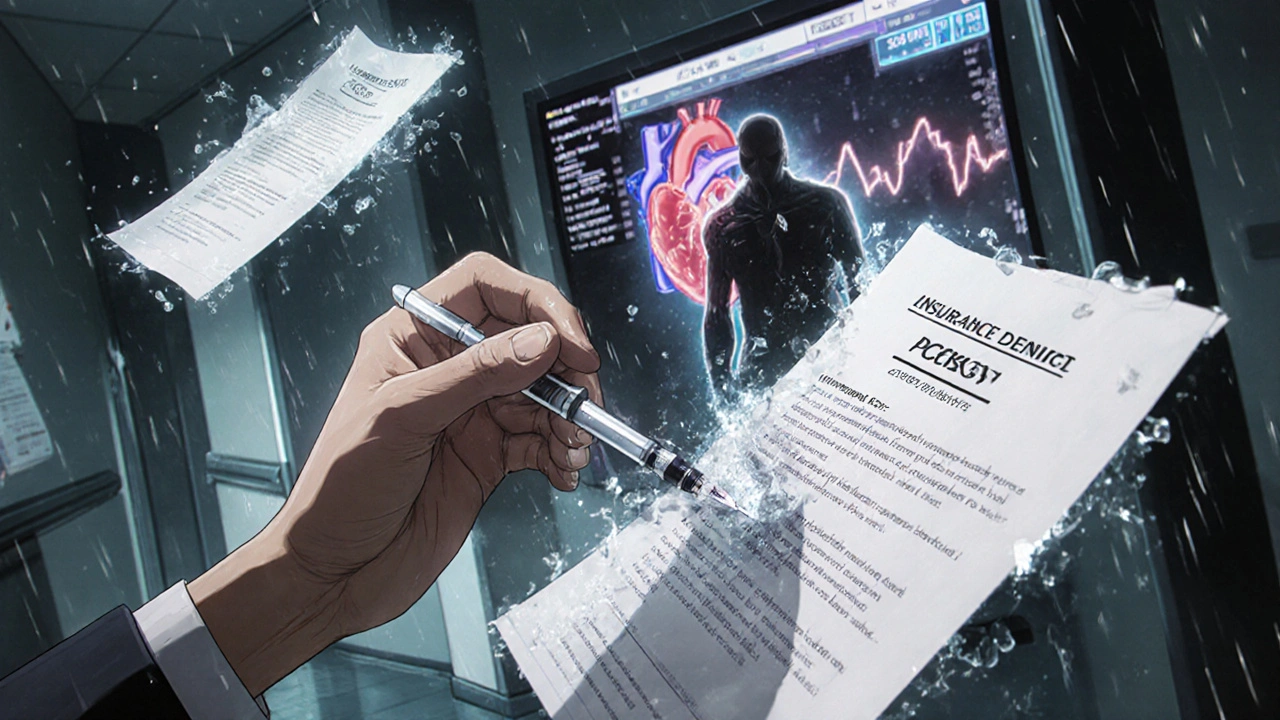Statin Tolerance Risk Calculator
Calculate Your Statin Tolerance Potential
Based on article data from statin intolerance clinics. Enter your information to see your personalized risk reduction potential.
Your Personalized Results
What Is Statin Intolerance, Really?
Many people hear they’re statin intolerant and assume they can never take cholesterol-lowering medication again. But that’s often not true. Statin intolerance isn’t a one-size-fits-all diagnosis-it’s a process. It means you’ve had side effects, usually muscle pain or weakness, that made you stop taking statins. But here’s the catch: up to 80% of people who think they can’t tolerate statins actually can, once they’re evaluated properly.
True statin intolerance is defined by the National Lipid Association as the inability to tolerate at least two different statins-one at the lowest dose and another at any dose-because of side effects. But symptoms alone aren’t enough. Muscle aches could be from aging, lack of movement, thyroid problems, or even vitamin D deficiency. That’s why specialized clinics don’t just take your word for it. They test, rule out other causes, and then carefully rechallenge you with different statins under supervision.
Without a structured approach, about 45% of patients quit statins for good. But in clinics using proven protocols, that number drops to just 18%. That’s a huge difference. Statins cut heart attacks and strokes by 20-25% for every 1 mmol/L drop in LDL cholesterol. Walking away from them without a plan puts you at real risk.
How Statin Intolerance Clinics Work
These clinics aren’t magic. They follow clear, step-by-step rules backed by research. The process usually starts when a patient comes in saying, “I can’t take statins anymore.” The first thing they do is stop the statin completely-for two weeks. This isn’t just a suggestion; it’s required. If the muscle pain goes away during that time, it’s a strong clue the statin was the cause.
Next, they check for other reasons the muscles might hurt. Thyroid levels? Vitamin D? Kidney or liver function? Alcohol use? Supplements like red yeast rice or CoQ10? Even over-the-counter painkillers can interact. If something else is to blame, fixing that might let you go back on statins safely.
Then comes the rechallenge. Instead of jumping back on the same statin that caused trouble, patients try a different one. Hydrophilic statins like rosuvastatin and pravastatin are often preferred because they’re less likely to enter muscle tissue. Simvastatin and atorvastatin, which are more lipophilic, tend to cause more muscle issues. Switching statins works for about 72% of people who thought they were intolerant.
The Role of Dosing Strategies
Some people can’t take statins daily but can handle them every other day-or even twice a week. This is called intermittent dosing. It’s not new, but it’s becoming more common in clinics because it works. A 2021 study at Cleveland Clinic followed 1,247 patients who couldn’t tolerate daily statins. When switched to rosuvastatin 5 mg twice weekly, 76% kept taking it without side effects and still lowered their LDL by 20-40%.
Why does this work? Statins build up in the liver over time. Even if you take them less often, they still do their job. Plus, lower frequency means less exposure to muscles, which reduces the chance of pain. This approach isn’t for everyone, but it’s a powerful tool for those who’ve failed daily dosing. The key is using long-acting statins like rosuvastatin or atorvastatin, which stay active in the body for days.

What If You Still Can’t Tolerate Statins?
Even with the best protocols, a small group-about 5-10%-still can’t take any statin. For them, there are non-statin options that work. Ezetimibe is the first choice. It costs about $35 a month and reduces LDL by 15-20%. It’s been proven in trials to lower heart attack risk by 6%, especially when combined with statins.
If that’s not enough, bempedoic acid (brand name Nexletol) is another option. It’s taken as a pill, doesn’t cause muscle pain, and lowers LDL by about 18%. It was tested in over 14,000 people and showed no increase in muscle-related side effects. The catch? It costs around $491 a month, and insurance often blocks it unless you’ve tried everything else.
PCSK9 inhibitors like evolocumab are injectables that drop LDL by 50-60%. They’re powerful, but they cost about $5,850 a year. Most insurers require multiple denials and appeals before approving them. That’s why clinics often spend weeks helping patients navigate paperwork. It’s not just medicine-it’s advocacy.
What Patients Are Saying
People who’ve been through these clinics often describe it as life-changing. One patient on Reddit shared: “After being told I was statin intolerant for five years, I went to Johns Hopkins. They put me on rosuvastatin 5 mg twice a week with CoQ10. My LDL dropped from 142 to 89. No pain.”
Kaiser Permanente’s internal survey found that 82% of patients in their statin intolerance program were able to restart some form of lipid-lowering therapy. That’s compared to just 45% in regular clinics. The most praised parts? The structured rechallenge, the personalized dosing, and having someone listen.
But it’s not perfect. Many patients complain about wait times-6 to 8 weeks to see a lipid specialist. Others get stuck with insurance denials. One person on the Inspire forum said their insurance denied PCSK9 inhibitors for 11 weeks, even though they met all the criteria. That’s a real barrier. Clinics are trying to fix this, but the system is still slow.

How Clinics Are Improving
The American College of Cardiology launched its Statin Intolerance Tool in March 2023. It’s a free online resource that helps doctors decide whether to try intermittent dosing, switch statins, or move to non-statin options. It even includes a risk calculator that weighs your chance of a heart attack against your risk of side effects.
Some clinics are now using genetic testing. A variant in the SLCO1B1 gene makes people more likely to get muscle pain from simvastatin. Mayo Clinic started testing for this in 2023. If you have the variant, they avoid simvastatin altogether. It’s not routine everywhere yet, but it’s a step toward precision medicine.
Even newer options are coming. Nanoparticle-delivered statins are in early trials. They target the liver directly and avoid muscles. Early results show 92% tolerability. That could change everything.
Who Should Go to a Statin Intolerance Clinic?
You don’t need to be a medical expert to know if you might benefit. Ask yourself: Did you stop a statin because of muscle pain? Did your doctor say you’re intolerant without testing anything else? Have you tried more than one statin and given up? If you answered yes to any of those, you should consider a specialist.
Don’t assume you’re stuck without treatment. Statin intolerance is often reversible. With the right approach, most people can find a way to lower their cholesterol safely. The goal isn’t to avoid statins-it’s to find the right way to use them, or if needed, to use something else that works just as well.
Why This Matters for Your Heart
Heart disease is still the number one killer worldwide. Statins are one of the most effective tools we have. But if you stop them because of side effects-and you don’t replace them with something else-you’re still at risk. The goal isn’t just to reduce cholesterol numbers. It’s to prevent heart attacks, strokes, and death.
Statin intolerance clinics aren’t about giving up on statins. They’re about giving you a second chance. They turn guesswork into science. They turn despair into options. And for millions of people who thought they had no choice, that’s everything.

Jennifer Walton
November 14, 2025 AT 11:29Kihya Beitz
November 15, 2025 AT 08:35Shyamal Spadoni
November 16, 2025 AT 01:30Ogonna Igbo
November 17, 2025 AT 21:42BABA SABKA
November 19, 2025 AT 15:48Chris Bryan
November 20, 2025 AT 02:31Jonathan Dobey
November 20, 2025 AT 10:26ASHISH TURAN
November 21, 2025 AT 09:32Ryan Airey
November 22, 2025 AT 05:42Hollis Hollywood
November 22, 2025 AT 06:14